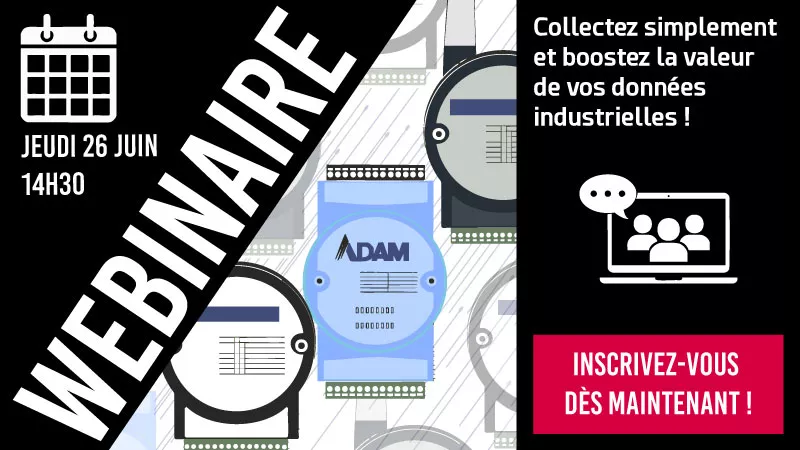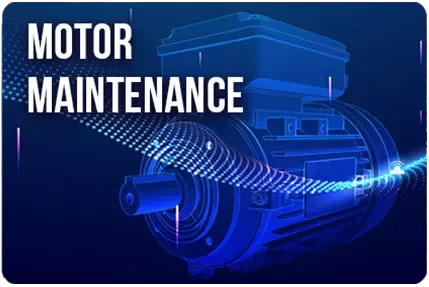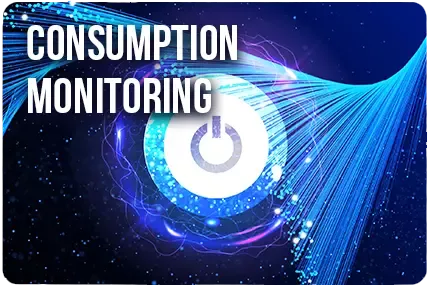Table of contents
- View the replay of our predictive maintenance webinar
- Introduction to predictive maintenance
- What is predictive maintenance ?
- The importance of predictive maintenance in the industry
- The different types of maintenance in the industry
- Data and equipments involved in the predictive maintenance strategy
- How to collect datas for predictive maintenance
- Sensors and additional data useful for optimized predictive maintenance
- Storage and hosting strategies for the collected datas
- How to setup the LoRaWan protocol for predictive maintenance
- The return on investment of a predictive maintenance strategy
- How to supervise your return on investment
- The budgets required to implement a predictive maintenance strategy
- Conclusion and benefits of a predictive maintenance strategy
View the replay of our predictive maintenance webinar
Introduction to predictive maintenance
What is predictive maintenance ?
Predictive maintenance is a proactive strategy aimed at anticipating equipment failures before they occur.
Predictive maintenance relies on the analysis of real-time operational data combined with advanced artificial intelligence algorithms.
Data collection can be achieved through various methods:
- Installing industrial sensors (vibration, temperature, etc.)
- Retrieving data from the PLC (Programmable Logic Controller)
- Using data acquisition modules
- ...
By keeping equipment in optimal working condition, predictive maintenance helps minimize production downtime and achieve significant cost savings by preventing unexpected and costly repairs.
The importance of predictive maintenance in the industry
Since 2019, there has been a decrease in the number of factories being established in France and an increase in offshoring.
In a geopolitical context where European industry must reinvent itself, efficiency is the key word for all manufacturers.
Adopting a predictive maintenance strategy ensures greater availability of production lines. By preventing potential unexpected production downtime, industries save time, money, and ensure higher production quality.
As Industry 4.0 becomes well-established and artificial intelligence experiences rapid development, predictive maintenance fits perfectly into this process.
Predictive maintenance combines the benefits of Industry 4.0 with data collection and artificial intelligence for processing. This type of solution can help manufacturers stay competitive against their Asian counterparts.
Adopting a predictive maintenance strategy ensures greater availability of production lines. By preventing potential unexpected production downtime, industries save time, money, and ensure higher production quality.
As Industry 4.0 becomes well-established and artificial intelligence experiences rapid development, predictive maintenance fits perfectly into this process.
Predictive maintenance combines the benefits of Industry 4.0 with data collection and artificial intelligence for processing. This type of solution can help manufacturers stay competitive against their Asian counterparts.
The different types of maintenance in the industry

There are primarily four types of maintenance in industry:
- Reactive maintenance: An approach that involves intervening only when equipment breaks down, leading to unexpected production downtime.
- Planned maintenance: This method relies on a regular, pre-scheduled maintenance plan, regardless of the actual condition of the machines.
- Preventive maintenance: It is based on a more advanced planning system, using performance indicators collected from machines to prevent failures.
- Predictive maintenance: This strategy uses advanced technologies to analyze real-time data and anticipate failures, enabling interventions before breakdowns occur and minimizing unplanned downtime.
Data and equipments involved in the predictive maintenance strategy
How to collect datas for predictive maintenance
Non-intrusive IoT sensor: This is a measuring device that can be installed without the need to modify or directly intervene on the machine, minimizing interruptions and costs.
Several methods are available to collect the data needed for predictive analysis.
Traditionally, machine data collection was done through the installation and configuration of specific acquisition modules, using industrial communication protocols such as:
Traditionally, machine data collection was done through the installation and configuration of specific acquisition modules, using industrial communication protocols such as:
- Modbus (TCP/RTU)
- OPC UA
- BacNet
- ...
Today, with the development of IIoT, the focus is on the use of non-intrusive, cost-effective data sensors that operate with wireless protocols like LoRa.
For example, our predictive maintenance solution for rotating motors simplifies data collection by using non-intrusive vibration sensors (Wise-2410). Simply install the sensor on the motor, pair it with your gateway (Wise-6610), and configure the data transmission to our prediction software (Wise-IoT/PHM).
With Integral System, the prediction software is included, and the pairing and transmission steps are fully simplified: install the sensor and immediately receive forecasts on the motor's health status.

Sensors and additional data useful for optimized predictive maintenance
Key Performance Indicators (KPIs): KPIs are metrics calculated from the raw data collected by sensors, providing a clear and actionable view of the condition of your machines.
You can launch your predictive maintenance system using only vibration data from a motor. This efficient approach allows you to enter the IoT world in a simple and cost-effective way.
Once your setup is in place, you can expand your system by adding various sensors to enrich the list of collected data and generate key performance indicators (KPIs) relevant to your operations.
With vibration data, you immediately obtain two essential KPIs:
Once your setup is in place, you can expand your system by adding various sensors to enrich the list of collected data and generate key performance indicators (KPIs) relevant to your operations.
With vibration data, you immediately obtain two essential KPIs:
- Motor health score
- Motor health projection for the next 7 days
These indicators allow you to significantly optimize your maintenance strategy.
By adding additional sensors to measure energy consumption, temperature, humidity, and other parameters, you can access new KPIs such as:
By adding additional sensors to measure energy consumption, temperature, humidity, and other parameters, you can access new KPIs such as:
- Average energy consumption of the device
- Average daily energy cost of the device
- Average operating temperature of the device
...
For critical or costly motors and equipment, collecting this data helps protect your investments and improve overall profitability.
For critical or costly motors and equipment, collecting this data helps protect your investments and improve overall profitability.
Storage and hosting strategies for the collected datas
Recommended cloud environment for Proof of Concept (PoC).
Proof of Concept (PoC): A demonstration that allows testing an idea or technology to ensure it meets the specific needs and requirements of the project, while reducing risks before full deployment.
Proof of Concept (PoC): A demonstration that allows testing an idea or technology to ensure it meets the specific needs and requirements of the project, while reducing risks before full deployment.
Overall, you have two options for storing and hosting your IIoT data:
- Cloud hosting on shared servers: This option allows you to store your data on remote servers managed by cloud service providers. It offers great flexibility, with scalable storage capacity, easy access to data from anywhere, and simplified maintenance. It is often a cost-effective solution, especially for companies looking to get started quickly with scalable infrastructure.
- Private hosting on a local server: Here, data is stored on a physical server located on-site or in your premises. This solution provides better control and enhanced security, as the data does not leave your internal network. It is ideal for companies with strict confidentiality and security requirements or those who prefer to have full control over their infrastructure.
Which strategy to choose?
The choice between these two options depends on several factors, including the size of your business, the volume of data to be processed, regulatory constraints, and your security priorities.
- Cloud: Recommended for companies that want a flexible and scalable infrastructure, with simplified data management and costs. Ideal for businesses that need remote access to their data or want to easily integrate advanced cloud-based analytics solutions.
- Local server: Preferred for companies that require full control over their data or operate in sensitive sectors with strict security requirements. This solution may also be more suitable if you already have an IT infrastructure in place or internal capabilities to manage and maintain local servers.
In summary, cloud offers flexibility and easy access to data, while local hosting ensures greater control and enhanced security. The choice of hosting strategy will depend on your priorities regarding security, costs, and operational needs.
How to setup the LoRaWan protocol for predictive maintenance
Integral System offers the integration of your sensors into the public LoRa network of Orange LiveObjects, with automatic data transfer to our prediction software. This is ideal for Proof of Concept (PoC).
LoRa technology is a radio signal that enables wireless data transmission and reception. LoRaWAN is the communication protocol that defines how this data is transmitted through the network.
To use the LoRaWAN protocol, you have two options:
- Use the public network: Before choosing this solution, ensure that the area of your installation is covered by the service provider (e.g., Orange). You will need to subscribe to a plan to access the network. Once that is done, simply register your sensors on the provider's platform to start receiving your data.
- Set up a private network: This option offers greater data security and allows you to manage network coverage based on your needs. For large installations, in geographically remote areas, or when higher security requirements are needed, we recommend this type of setup. To use a private network, you will need a LoRaWAN gateway equipped with an antenna capable of receiving data packets. You will then need to pair your sensors and redirect the data to the software of your choice.
Note: A private gateway can be connected to the internet and communicate with cloud-based or local network software.
For the Proof of Concept approach, we recommend using the public network if your area is covered. Otherwise, we offer entry-level gateways, which are sufficient for setting up small-scale projects.
Become a reseller of our predictive maintenance solution
Enhance your skills with us and benefit from partner pricing to resell all our solutions.
Request a free demoThe return on investment of a predictive maintenance strategy
How to supervise your return on investment
Implementing a predictive maintenance strategy requires an initial investment in sensors, software, and infrastructure, but the long-term financial benefits are significant.
To monitor and measure the return on investment (ROI), it is crucial to track several key indicators:
- Reduction in maintenance costs: By predicting failures before they occur, companies reduce costly emergency interventions and optimize planned maintenance operations. The total cost of repairs and parts replacement can be significantly reduced.
- Decrease in unplanned production downtime: Unscheduled interruptions directly impact productivity and profitability. With predictive maintenance, these downtimes are minimized, ensuring better production continuity.
- Increased equipment lifespan: By identifying potential failures at an early stage, predictive maintenance helps extend the life of machines and avoid premature equipment replacements.
- Optimization of spare parts inventory: With better planning, companies can reduce expensive spare parts inventory and optimize resource management.
To track and optimize the ROI of a predictive maintenance strategy, it is essential to define key performance indicators (KPIs) such as:
- Reduction in unplanned machine stops
- Reduction in maintenance costs per intervention
- Increase in equipment availability rate
- ROI calculated based on savings compared to initial costs
Regular analysis of these KPIs allows decision-makers to measure the real impact of predictive maintenance on operations and adjust the strategy accordingly to maximize benefits. A well-executed strategy can deliver measurable ROI within a few months, with significant financial gains and continuous improvements in equipment performance.
The budgets required to implement a predictive maintenance strategy
We offer our clients the opportunity to become resellers of all our hardware/software solutions. Feel free to contact us for a free demo, either at our premises or via video call.
Implementing a predictive maintenance strategy involves investments across three main categories:
- Hardware budget: Includes the purchase of sensors, gateways, and other accessories required to collect real-time data.
- Software budget: Covers the acquisition of software licenses, with flexible options such as annual subscriptions for SaaS solutions or permanent licenses for on-premise installations.
- Service budget: Includes pre-configuration of hardware, assistance with integration into enterprise software, on-site installation, and technical support.
At Integral System, we offer turnkey solutions that include all of these components: hardware, software, pre-configuration, and technical documentation to facilitate installation. We also offer a Proof of Concept launch package, which allows for a quick installation and testing of our predictive maintenance technology on a limited number of machines, at attractive rates. This approach allows businesses to experience the benefits of our solution before committing to larger deployments.
Conclusion and benefits of a predictive maintenance strategy
Predictive maintenance offers numerous benefits, including:
- Reduction of costs related to breakdowns and maintenance
- Decrease in equipment downtime
- Optimization of team schedules through performance indicator tracking
Integral System’s solution offers a comprehensive, all-in-one approach, including:
- Hardware, software, and services for a complete turnkey solution
- Flexibility and scalability with:
- The option of using either a public or private LoRa network
- Local installation or SaaS software
- Compatibility with sensors from all brands, allowing easy integration into various environments
- A powerful software that covers all aspects of industrial fleet management
- Reliable and durable hardware, ensuring the longevity of your installation
- A non-intrusive solution with sensors that can be installed without stopping operations, ensuring a quick and efficient setup
Check out our Frequently Asked Questions (FAQ)
Got more questions? Check out our Frequently Asked Questions (FAQ), or contact us!
See the Frequently Asked QuestionsDiscover our ready to resell solutions

Customized solutions
You have a very specific project, very precise needs, need expertise ? Let's talk !
Contact us

